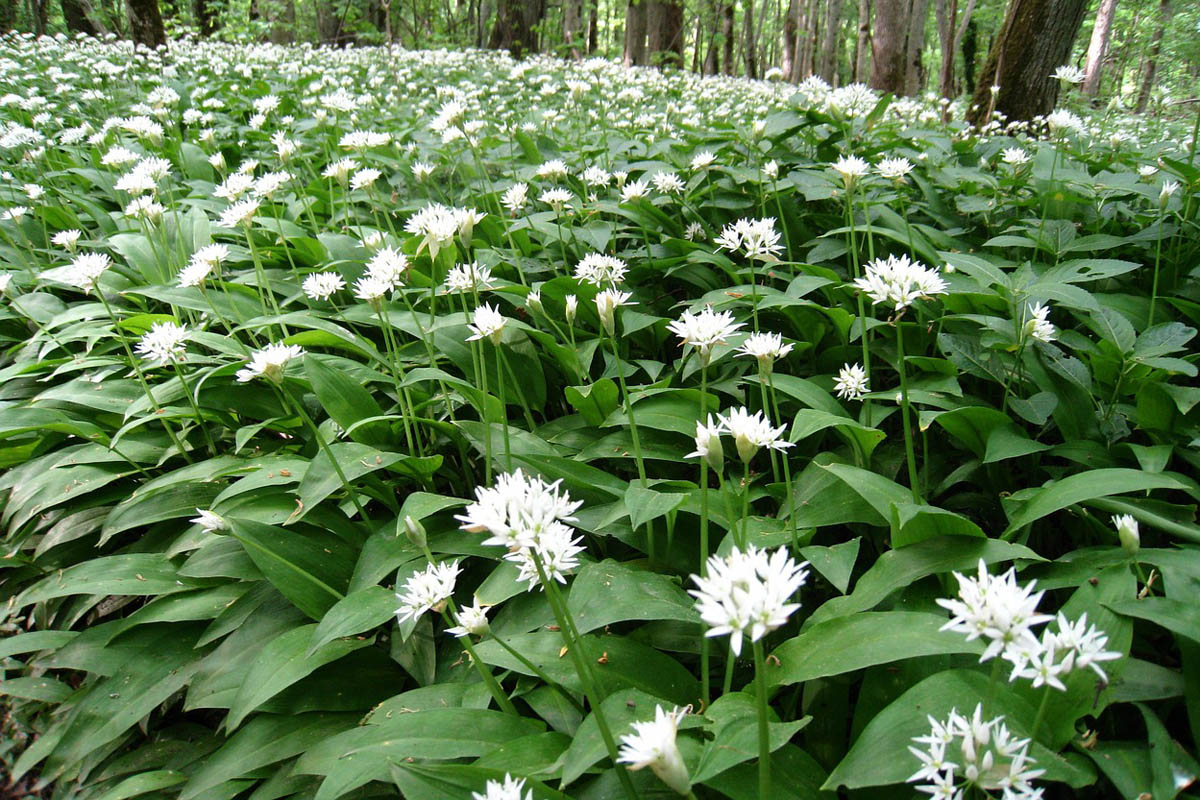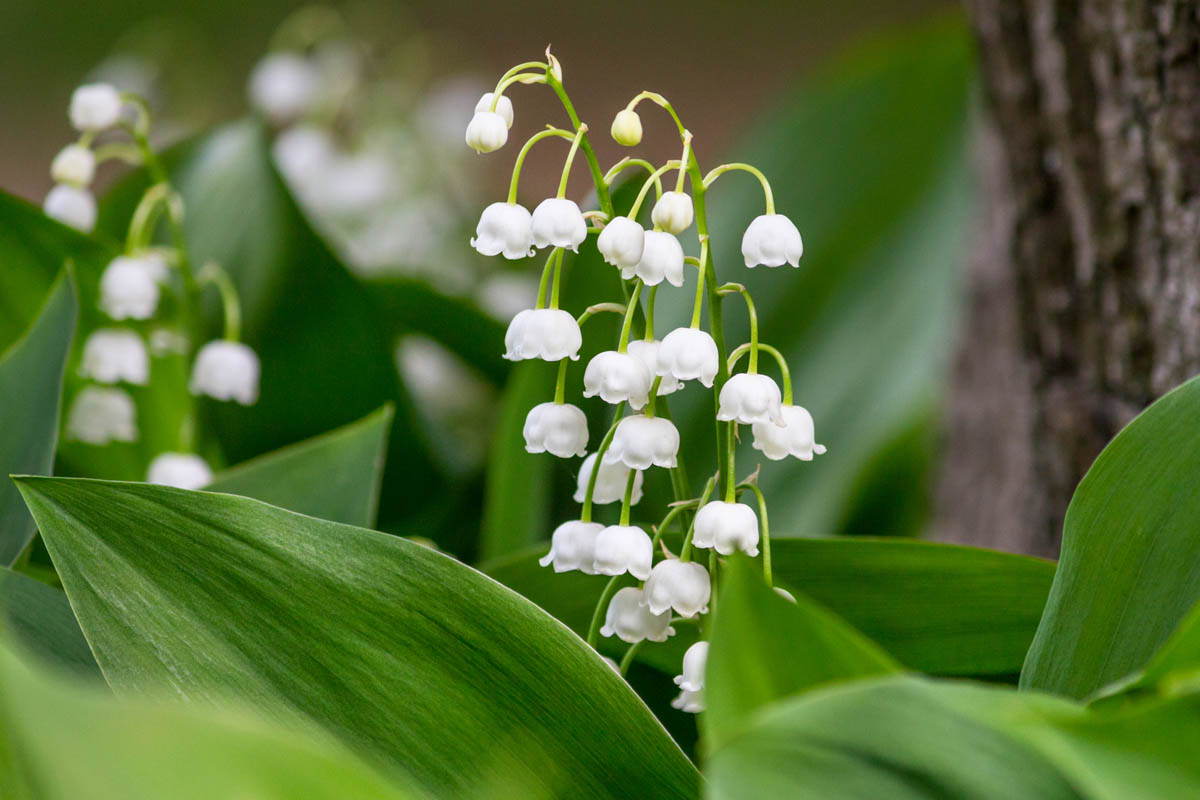Is lily of the valley toxic to cats?
Lily of the valley (Convallaria majalis) is toxic to cats. The toxic principles are cardiac glycosides, (primarily convallarin and convallamarin). Cardiac glycosides are plant-derived steroids that influence heart function. Every component of the lily of the valley including its leaves, flowers, berries, stems, and bulbs, is poisonous.
What is lily of the valley?
| Family | Asparagaceae |
| Botanical name |
Cultivars:
|
| Common names | Lily of the Valley, European Lily of the Valley, Our Lady’s Tears, May Bells, Mary’s Tears |
| Leaf colour | Green |
| Flower colour | White, pink |
| Toxicity | Toxic to cats and dogs |
| Toxic properties | Over 30 cardiac glycosides |
| Toxic parts | All parts (highest concentrations are in the roots) |
Lily of the Valley (Convallaria majalis) is a perennial flowering woodland plant known for its delicate, sweetly-scented, bell-shaped white or pink flowers. Native to cool temperate regions in the Northern Hemisphere, it is especially prominent in parts of Europe and Asia.
The flower is often associated with humility, sweetness, and the return of happiness, and is a symbol of May in various cultures. It is traditionally sold in France on May 1st as a symbol of spring.
Due to its attractive appearance and fragrance, lily of the valley is a popular choice for shaded garden areas and woodland settings. It spreads through underground rhizomes, forming extensive colonies. Because of this, it can be aggressive in garden settings if not managed.
Wild garlic vs lily of the valley
Wild garlic (Allium ursinum) has a similar appearance to lily of the valley, with lance-shaped leaves, and small white flowers that bloom in spring.

- Leaves: Wild garlic has long, lance-shaped leaves that are bright green and typically appear in a rosette close to the ground. The leaves are typically broad, with a distinct midrib.
- Smell: The most distinguishing feature of wild garlic is its strong garlic smell. When you crush or bruise the leaves, they emit a distinct garlic odour.
- Flowers: Wild garlic produces small, star-shaped white flowers that grow in clusters on tall stems. The flowers typically bloom in late spring.
- Habitat: You can often find wild garlic in wooded areas, forests, and along riverbanks. It prefers moist, shady conditions.

- Leaves: Lily of the valley has short, lance-shaped leaves that are dark green and grow in pairs along a stem. The leaves do not have the strong garlic odour of wild garlic.
- Smell: Lily of the valley has a sweet, pleasant fragrance and is known for its aromatic, bell-shaped white flowers.
- Flowers: The plant produces small, bell-shaped white flowers that hang downward on slender, arching stems. The flowers typically bloom in late spring.
- Habitat: Lily of the valley is often found in gardens, parks, landscaped areas and woodlands. It prefers well-drained soil and can be a common ornamental plant.
Toxicity
The University of California lists lily of the valley as category one.
Major Toxicity: These plants may cause serious illness or death. If ingested, immediately call the Poison Control Center — (800) 222-1222 — or your doctor.
- Cardiac glycosides: These are a group of organic compounds that affect the heart by increasing the force of heart contractions and decreasing its rate of contractions. Cardiac glycosides inhibit the sodium-potassium ATPase pump, resulting in increased intracellular calcium concentrations in the cardiac muscle cells. This action can lead to stronger heart contractions but can be dangerous and cause arrhythmias if levels are too high.
How much lily of the valley is toxic to cats?
Even a small amount of any part of the plant can be toxic to cats. In humans, the lethal dose is 0.08mg per kg. Unfortunately, there is no specific safe threshold because the effects can be severe even with minimal ingestion. The toxic dose and symptoms can vary depending on the specific cat’s size, age, and overall health.
Clinical signs
All parts of lily of the valley are toxic to cats. Symptoms of lily of the valley poisoning can present as gastrointestinal or cardiac dysfunction. Symptoms progress over an extended timeline.
Gastrointestinal disturbances:
The initial symptoms of Lily of the Valley toxicity are often related to the gastrointestinal tract.
- Diarrhea: Cats may experience loose stools due to gastrointestinal upset.
- Abdominal pain: Some cats may appear hunched or show signs of discomfort when their abdominal area is touched.
- Drooling: Excessive salivation can occur as a response to oral irritation or nausea.
Cardiac manifestations as toxicity progresses:
As the toxic compounds are absorbed, cardiac symptoms may emerge.
- Cardiac arrhythmias: Irregular heart rhythms may develop due to the presence of cardiac glycosides in the plant.
- Slowed heart rate (bradycardia): Cats may exhibit a slowed heart rate, which is a concerning symptom.
- Low blood pressure (hypotension): Hypotension can result from cardiac dysfunction, further complicating the cat’s condition.
Central nervous system involvement:
In severe cases, lily of the valley toxicity can affect the central nervous system.
- Dilated pupils: In some instances, pupils may appear larger than usual.
- Lethargy: Cats may become increasingly lethargic or weak.
- Seizures or tremors: In the most severe cases, neurological signs like seizures or muscle tremors can occur, indicating a critical stage of toxicity.
First aid
If possible, remove any remaining plant matter from the cat’s mouth. Due to the severity of lily of the valley poisoning, veterinary attention should be sought immediately. If possible, call ahead to let the veterinary clinic know you are on your way and what the cat has ingested.
Treatment
As there is no antidote to lily of the valley poisoning, the goal of treatment will be to prevent further absorption and manage clinical signs.
In cases of lily of the valley poisoning inducing emesis (vomiting) is not typically recommended because the toxic compounds are absorbed quickly into the bloodstream. By the time symptoms appear the toxins have often already been absorbed. The veterinarian will perform a gastric lavage (pump the stomach) under general anesthesia to remove any remaining plant matter from the gastrointestinal tract. This may be followed by administration of activated charcoal. Activated charcoal works in cases of poisoning by adsorbing (not absorbing) toxic substances in the gastrointestinal tract. It has a highly porous structure with a large surface area, which makes it effective at trapping toxins. When a cat ingests activated charcoal, it binds to the toxic substances, preventing their absorption into the bloodstream. Instead, the charcoal-toxin complex passes through the GI tract and is eliminated from the body through feces.
Lidocaine or atropine will be prescribed to manage abnormal heart rhythms, and oxygen therapy can help to improve breathing, where necessary.
Supportive care will include intravenous fluids, to prevent dehydration and correct electrolyte imbalances.
To monitor the patient’s progress and response to treatment, the veterinarian will run repeat blood tests to measure serum potassium levels and perform an electrocardiogram to monitor heart activity. With proper and timely care, patients can recover from lily of the valley poisoning.
Prevention and safety: Protecting your cat
- Identify the plant: First and foremost, familiarise yourself with the appearance of the lily of the valley. It features lance-shaped leaves, fragrant bell-shaped white flowers, and, occasionally, red berries. Proper identification of potentially toxic plants is critical for pet owners.
- Remove the plant: If you have a lily of the valley in your garden, consider removing it altogether, especially if you have curious cats. Choose cat-friendly plants as alternatives. If you wish to keep your lily of the valley, keep it in an area entirely inaccessible to your pets, such as a securely fenced garden or a room they can’t enter.
- Indoor safety: Lily of the valley can also be used in floral arrangements. Always check any indoor flower arrangements to ensure they don’t contain any toxic flowers.
- Supervision: When your cat enjoys outdoor time, supervise their activities to prevent them from nibbling on unfamiliar plants, including lily of the valley, which might be present in nearby gardens or natural areas.
- Pet-proof: Consider pet-proofing your home and garden with measures like installing cat barriers or fencing to keep your cats away from potentially toxic plants.
- Emergency plan: In case of accidental ingestion or exposure, have a plan in place. Know the location and contact information for your nearest emergency veterinary clinic or a pet poison control hotline. Quick action can be lifesaving.

